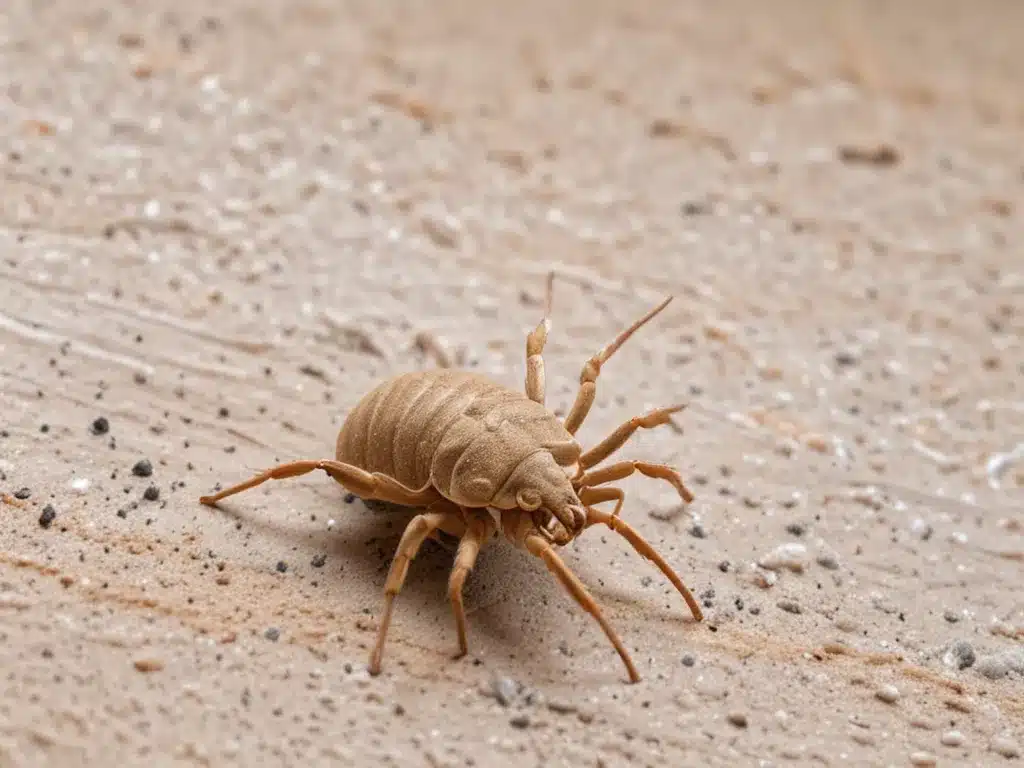Dust mites are microscopic creatures that feed on dead skin cells shed by humans and pets. Though you can’t see them, they are present in most homes and can trigger allergy and asthma symptoms. Here’s how to get rid of dust mites and reduce their impact on your indoor air quality.
What Are Dust Mites?
Dust mites are tiny arachnids, related to spiders and ticks. At about 0.3 mm long, they are too small to see with the naked eye. These creatures feed on dead skin cells shed by humans and pets. They thrive in warm, humid environments like beds, carpets, stuffed toys, and fabric furnishings.
An average mattress can contain over 100,000 dust mites! They are present year-round but proliferate in warmer months when humidity is higher. Dust mites themselves are harmless, but their feces and decaying bodies can trigger allergic reactions and asthma in sensitive individuals.
Health Effects of Dust Mite Exposure
For most people, inhaling dust mite allergens has no effect. However, sensitive individuals may experience:
- Sneezing, runny nose, congestion – allergic rhinitis symptoms
- Wheezing, coughing, chest tightness – asthma symptoms
- Itchy, watery eyes – allergic conjunctivitis
- Eczema flare-ups – itchy, inflamed skin
Dust mite allergy is a common trigger for asthma and allergies worldwide. In sensitized individuals, inhaling the allergens causes an overreaction of the immune system. Reducing exposure to dust mite allergens can improve allergy and asthma symptoms.
How to Reduce Dust Mites in Your Home
While you can’t eliminate dust mites completely, you can reduce their numbers significantly with some simple measures:
Frequent Vacuuming
Vacuum carpets, upholstery, and bedding weekly using a vacuum with a HEPA filter. This removes allergens trapped in dust before they become airborne. Pay special attention to beds and fabric-covered furniture, dust mite hotspots.
Wash Bedding Frequently
Wash sheets, pillowcases, and blankets in hot water (130°F) weekly to kill dust mites. For non-washable bedding, dry clean or beat outside regularly.
Dust-Proof Mattress and Pillow Covers
Enclose mattresses and pillows in special covers that block dust mites. Look for covers made of tightly-woven, impenetrable fabric.
Limit Clutter and Fabrics
Since dust mites thrive on fabric and textiles, limit them in your home. Remove stuffed animals, hang up clothing, and choose easy-to-clean furnishings.
Maintain Low Humidity
Dust mites need humidity above 50% to survive. Use dehumidifiers and air conditioners to keep indoor humidity below 50%.
Clean Often
Dust and vacuum frequently to remove dust mite allergens before they accumulate. Use damp dusting methods and vacuum with HEPA filters.
Additional Tips for Reducing Dust Mites
- Wash bedding and fabric items like toys, curtains, and upholstery in hot water regularly.
- Replace fabric-covered furniture with leather, wood, and other dust mite unfriendly materials.
- Remove carpets, especially in bedrooms. Opt for bare floors.
- Freeze or heat treat stuffed toys to kill dust mites.
- Limit pets, which shed dander that feeds dust mites.
- Install hardwood or tile flooring instead of carpet.
- Ventilate rooms often to lower humidity.
While dust mites may be impossible to eliminate entirely, taking active steps can significantly reduce their presence in your home. By limiting their numbers, you can minimize allergy and asthma triggers, creating a healthier indoor environment.







